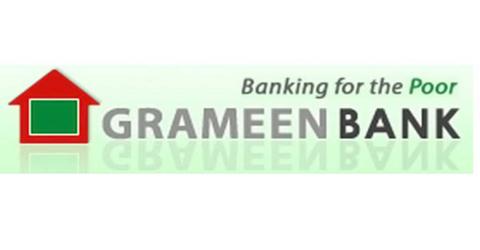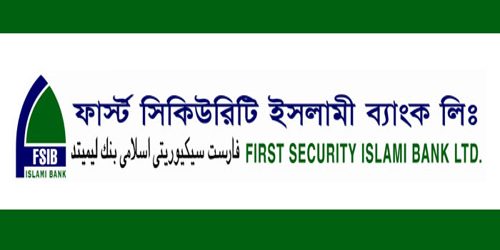Grameen Bank (GB) has reversed conventional banking practice by removing the need for collateral and created a banking system based on mutual trust, accountability, participation, and creativity. GB provides credit to the poorest of the poor in rural Bangladesh, without any collateral. At GB, credit is a cost effective weapon to fight poverty and it serves as a catalyst in the overall development of socio-economic conditions of the poor who have been kept outside the banking orbit on the ground that they are poor and hence not bankable. Professor Muhammad Yunus, the founder of “Grameen Bank” and its Managing Director, reasoned that if financial resources can be made available to the poor people on terms and conditions that are appropriate and reasonable, “these millions of small people with their millions of small pursuits can add up to create the biggest development wonder.”
Objective of this perm paper
The primary purpose of the term paper is to partially fulfill the requirements for Industrial psychology course and develop the knowledge and learn the formal procedures of a successful term paper. However, in preparing our term paper, we have looked at the following objectives:
(a) Conducted a comprehensive literature search relating to the area of investigation.
(b) Synthesized and analyzed the evidence from the literature search and identified an appropriate approach to the problem specified.
(c) Demonstrated practical and professional skills in the development of a business solution.
(d) Documented the system to professional standards.
(e) Perform an in-depth critical review of the work undertaken.
(f) Made an effective contribution to the Industrial environment.
(g) Communicated effectively with colleagues.
Programs and characteristics of Grameen bank
Owned by the Poor
Grameen Bank Project was born in the village of Jobra, Bangladesh, in 1976. In 1983 it was transformed into a formal bank under a special law passed for its creation. It is owned by the poor borrowers of the bank who are mostly women. It works exclusively for them. Borrowers of Grameen Bank at present own 94 percent of the total equity of the bank. Remaining 6 percent is owned by the government.
No Collateral, No Legal Instrument, No Group-Guarantee or Joint Liability
Grameen Bank does not require any collateral against its micro-loans. Since the bank does not wish to take any borrower to the court of law in case of non-repayment, it does not require the borrowers to sign any legal instrument.
Although each borrower must belong to a five-member group, the group is not required to give any guarantee for a loan to its member. Repayment responsibility solely rests on the individual borrower, while the group and the center oversee that everyone behaves in a responsible way and none gets into repayment problem. There is no form of joint liability, i.e. group members are not responsible to pay on behalf of a defaulting member.
97 percent Women
The total number of borrowers is 6.95 million, 97 percent of them are women.
Branches
Grameen Bank has 2,343 branches. It works in 75,359 villages. Total staff is 21,363.
Over Tk 310 billion Disbursed
The total amount of loan disbursed by Grameen Bank, since inception, is Tk 310.20 billion (US$ 6.01 billion). Out of this, Tk 277.00 billion (US$ 5.34 billion) has been repaid. The current amount of outstanding loans stands at TK 33.20 billion (US$ 478.02 million). During the past 12 months (from February’06 to January’07) Grameen Bank disbursed Tk. 50.26 billion (USD $ 730.09 million). Monthly average loan disbursement over the past 12 months was Tk 4.19 billion (USD $ 60.84 million).(See Appendix-2)
Projected disbursement for 2007 is Tk 65.00 billion (USD $ 930 million), i.e. monthly disbursement of Tk 5.42 billion (USD $ 77.50 million). End of the year outstanding loan is projected to be at Tk. 40.00 billion (USD $ 572 million)
Recovery Rate 98 percent
Loan recovery rate is 98.48 percent.
100 percent Loans Financed From Bank’s Deposits
Grameen Bank finances 100 percent of its outstanding loan from its deposits. Over 61 percent of its deposits come from bank’s own borrowers. Deposits amount to 136 percent of the outstanding loans. If we combine both deposits and own resources it becomes 154 percent of loans outstanding
No Donor Money, No Loans
In 1995, GB decided not to receive any more donor funds. Since then, it has not requested any fresh funds from donors. The last installment of donor fund, which was in the pipeline, was received in 1998. GB does not see any need to take any donor money or even take loans from local or external sources in future. GB’s growing amount of deposits will be more than enough to run and expand its credit programme and repay its existing loans.
Earns Profit
Ever since Grameen Bank came into being, it has made a profit every year except in 1983, 1991, and 1992. It has published its audited balance-sheet every year, audited by two internationally reputed audit firms of the country. All these reports are available on CD, and some on our website: www.grameen.com.
Revenue and Expenditure
Total revenue generated by Grameen Bank in 2005 was Tk 7.39 billion (USD $ 112.40 million). Total expenditure was Tk 6.39 billion (USD $ 97.19 million). Interest payment on deposits of Tk 2.29 billion (USD $ 34.74 million) was the largest component of expenditure (36 percent). Expenditure on salary, allowances, pension benefits amounted to Tk 1.67 billion (USD $ 25.37 million), which was the second largest component of the total expenditure (26 percent). Grameen Bank made a profit of Tk 1000 million (USD $ 15.21 million) in 2005. Entire profit is transferred to a Rehabilitation Fund created to cope with disaster situations. This is done in fulfillment of a condition imposed by the government for exempting Grameen Bank from paying corporate income tax
Low-Interest Rates
The government of Bangladesh has fixed interest rate for government-run micro-credit programmers at 11 percent at a flat rate. It amounts to about 22 percent at declining basis. Grameen Bank’s interest rate is lower than government rate.
There are four interest rates for loans from Grameen Bank: 20% (declining basis) for income generating loans, 8% for housing loans, 5% for student loans, and 0% (interest-free) loans for Struggling Members (beggars). All interests are simple interest, calculated on declining balance method. This means, if a borrower takes an income-generating loan of say, Tk 1,000, and pays back the entire amount within a year in weekly installments, she’ll pay a total amount of Tk 1,100, i.e. Tk 1,000 as principal, plus Tk 100 as interest for the year, equivalent to 10% flat rate.
Deposit Rates
Grameen Bank offers very attractive rates for deposits. Minimum interest offered is 8.5 percent. Maximum rate is 12 percent.
Beggars as Members
Begging is the last resort for survival for a poor person unless he/she turns into crime or other forms of illegal activities. Among the beggars, there are disabled, blind, and retarded people, as well as old people with ill health. Grameen Bank has taken up a special program, called Struggling Members Program, to reach out to the beggars. About 91,000 beggars have already joined the program. Total amount disbursed stands at Tk. 81.98 million. Of that amount of Tk. 51.47 million has already been paid off.
Basic features of the program are:
- Existing rules of Grameen Bank do not apply to beggar members; they make up their own rules.
- All loans are interest-free. Loans can be for the very long term, to make repayment installments very small. For example, for a loan to buy a quilt or a mosquito-net, or an umbrella, many borrowers are paying Tk 2.00 (3.4 cents US) per week.
- Beggar members are covered under life insurance and loan insurance programs without paying any cost
- Groups and centers are encouraged to become patrons of the beggar members.
- Each member receives an identity badge with Grameen Bank logo. She can display this as she goes about her daily life, to let everybody know that she is a Grameen Bank member and this national institution stands behind her.
- Members are not required to give up begging but are encouraged to take up an additional income-generating activity like selling popular consumer items door to door, or at the place of begging.
The objective of the program is to provide financial services to the beggars to help them find a dignified livelihood send their children to school and graduate into becoming regular Grameen Bank members. We wish to make sure that no one in the Grameen Bank villages has to beg for survival.
Housing for the Poor
Grameen Bank introduced housing loan in 1984. It became a very attractive programme for the borrowers. This program was awarded Aga Khan International Award for Architecture in 1989. Maximum amount given for housing loan is Tk 15,000 (USD $ 216) to be repaid over a period of 5 years in weekly installments. The interest rate is 8 percent. 6,42,355 houses have been constructed with the housing loans averaging Tk 13,202 (USD $ 190). A total amount of Tk 8.48 billion (USD $ 203.57 million) has been disbursed for housing loans. During the past 12 months (from February’06 to January’07) 14,253 houses have been built with housing loans amounting to Tk 137.45 million (USD $ 2.00 million).
Micro-enterprise Loans
Many borrowers are moving ahead in businesses faster than others for many favorable reasons, such as proximity to the market, the presence of experienced male members of the family, etc. Grameen Bank provides larger loans, called micro-enterprise loans, for these fast moving members. There is no restriction on the loan size. So far 1,035,751 members took micro-enterprise loans. A total of Tk 22.30 billion (USD $ 348.83 million) has been disbursed under this category of loans. Average loan size is Tk 21,534 (USD $ 310), maximum loan taken so far is Tk 1.2 million (USD $ 19,897). This was used in purchasing a truck which is operated by the husband of the borrower. Power-tiller, irrigation pump, transport vehicle, and river-craft for transportation and fishing are popular items for micro-enterprise loans.
Scholarships
Scholarships are given, every year, to the high performing children of Grameen borrowers, with priority on girl children, to encourage them to stay ahead of their classes. Up to January 2007, scholarships amounting to US$ 450,000 have been awarded to 35,494 children. During 2007, US$ 775,000 will be awarded to about 30,000 children, at various levels of school and college education.
Education Loans
Students who succeed in reaching the tertiary level of education are given higher education loans, covering tuition, maintenance, and other school expenses. By January’07, 14,984 students received higher education loans, of the 13,999 students are studying at various universities; 170 are studying in medical schools, 321 are studying to become engineers, 494 are studying in other professional institutions.
Grameen Network
1) Grameen Phone Ltd.
2) Grameen Telecom
3) Grameen Communications
4) Grameen Cybernet Ltd.
5) Grameen Software Ltd.
6) Grameen IT Park
7) Grameen Information Highways Ltd.
8) Grameen Star Education Ltd.
9) Grameen Bitek Ltd.
10) Grameen Uddog (Enterprise)
11) Grameen Shamogree (Products)
12) Grameen Knitwear Ltd.
13) Gonoshasthaya Grameen Textile Mills Ltd.
14) Grameen Shikkha (Education)
15) Grameen Capital Management Ltd.
16) Grameen Byabosa Bikash (Business Promotion )
17) Grameen Trust
Grameen Bank-Created Companies
The following companies in the Grameen network were created by Grameen Bank, as separate legal entities, to spin off some projects within Grameen Bank funded by donors. Donor funds transferred to Grameen Fund were given as a loan from Grameen Bank. These companies have the following loan liability to Grameen Bank :
- Grameen Fund: Tk 373.2 million (USD $ 6.38 million)
- Grameen Krishi Foundation: Tk 19 million (USD $ .33 million)
- Grameen Motsho (Fisheries) Foundation: Tk 15 million (USD $ .26 million)
Grameen Bank provided guarantees in favor of the following organizations while they were receiving loans from the government and the financial organizations. These guarantees are still in effect.
Grameen Shakti: Tk 9 million (USD $ 0.12 million); Grameen Motsho (Fisheries) Foundation: Tk 8 million (USD $ 0.11 million)
Grameen Kalyan
Grameen Kalyan (well-being) is a spin-off company created by Grameen Bank. Grameen Bank created an internal fund called Social Advancement Fund (SAF) by imputing interest on all the grant money it received from various donors. SAF has been converted into a separate company to carry out its mandate to undertake social advance activities among the Grameen borrowers, such as education, health, technology, etc.
Loans Paid Off At Death
In case of death of a borrower, all outstanding loans are paid off under Loan Insurance Program. Under this program, an insurance fund is created by the interest generated in a savings account created by deposits of the borrowers made for loan insurance purpose, at the time of receiving loans. Each time an amount equal to 3 percent of the loan amount is deposited in this account. This amount is transferred from the Special Savings account. If the current balance in the insurance savings account is equal or more than the 3 percent of the loan amount, the borrower does not need to add any more money to this account. If it is less than 3 percent of the loan amount, she has to deposit enough money to make it equal.
Coverage of the loan insurance program has also been extended to the husbands with additional deposits in the loan insurance deposit account. A borrower can get the outstanding amount of loan paid off by insurance if her husband dies. She can continue to borrow as if she has paid off the loan.
Total deposits in the loan insurance savings account stood at Tk 3,820.55 million (US$ 55.00 million) as on January 31, 2007. Up to that date, 55,462 insured borrowers and insured husbands died and total outstanding loans and interest of Tk 382.79 million (USD $ 6.11 million) left behind was paid off by the bank under the program. The families of the deceased borrowers are not be required to pay off their debt burden anymore because the insured borrowers or their insured husbands do not leave behind any debt burden to take care of.
Life Insurance
Each year families of deceased borrowers of Grameen Bank receive a total of Tk 8 to 10 million (USD $ 0.14 million to 0.17 million) in life insurance benefits. Each family receives Tk 1,500. A total of 90,086 borrowers died so far in Grameen Bank. Their families collectively received a total amount of Tk 170.90 million (US$ 3.72 million). Borrowers are not required to pay any premium for this life insurance. Borrowers come under this insurance coverage by being a shareholder of the bank.
Deposits
By the end of January 2007 total deposit in Grameen Bank stood at Tk. 45.11 billion (US$ 649.48 million). Member deposit constituted 61 percent of the total deposits. A balance of member deposits has increased at a monthly average rate of 2.87 percent during the last 12 months.
Pension Fund for Borrowers
As borrowers grow older they worry about what will happen to them when they cannot work and earn any more. Grameen Bank addressed that issue by introducing the program of creating a Pension Fund for old age. It immediately became a very popular program.
Under this program, a borrower is required to save a small amount, such as Tk 50 (US$ 0.86), each month over a period of 10 years. The depositor gets almost twice the amount of money she saved, at the end of the period. The borrowers find it very attractive. By the end of January 2007, the balance under this account comes to a total of Tk 13.34 billion (US$ 192.04 million). Tk 4.27 billion (US$ 62.04 million) was added during the past 12 months (February- January 2007). We expect the balance in this account to grow by Tk 6.26 billion (US$ 89.54 million) in 2007 making the balance to reach Tk 19.60 billion (US$ 280.36 million).
Loan Loss Reserve
Grameen Bank has a very rigorous policy on bad debt provisioning. If a loan does not get paid back on time it is converted into a special type of loan called “Flexible Loan”, and 50 percent provisioning is done at the first annual closing. Hundred percent provisioning is done when flexible loan completes the second year. At its third year, the outstanding amount is completely written off even if the loan repayment still continues.
Balance in the loan loss reserve stood at Tk 2.71billion (US$ 41.12 million) at the end of 2005 after writing off an amount of Tk 2.00 billion (US$ 30.40 million) during 2005. Out of the total amount written off in the past an amount of Tk 0.85 billion (US$ 12.96 million) has been recovered during 2005.
Retirement Benefits Paid Out
Grameen Bank has an attractive retirement policy. Any staff can retire after completing ten years or more of service. At the time of retirement, he receives a retirement benefit in cash. It is usually paid out within a month after retirement. Since this benefit was introduced 6,226 staff members retired and received a total amount of Tk 3.43 billion (US$ 61.65 million) in cash. This amounts to Tk 0.55 million (US $ 9,902) per retiring staff. During the past 12 months, 601 staff went on retirement collecting a retirement benefit of Tk 556.00 million (US$ 8.08 million). Average retirement benefit per staff was Tk 0.93 million (US$ 13,444).
Telephone-Ladies
To-date Grameen Bank has provided loans to 282,662 borrowers to buy mobile phones and offer telecommunication services in nearly half of the villages of Bangladesh where this service never existed before. Telephone-ladies run a very profitable business with these phones.
Telephone-ladies play an important role in the telecommunication sector of the country, and also in generating revenue for Grameen Phone, the largest telephone company in the country. Telephone ladies use 16.5 percent of the total air-time of the company, while their number is only 4 percent of the total number of telephone subscribers of the company
Getting Elected in Local Bodies
The Grameen system makes the borrowers familiar with the election process. They routinely go through electing group chairmen and secretaries, center-chiefs and deputy center-chiefs every year. They elect board members for running Grameen Bank every three years. This experience has prepared them to run for public offices. They are contesting and getting elected in the local governments. In 2003 local government (Union Parishad) election 7,442 Grameen members contested the reserved seats for women, 3,059 members got elected. They constitute 24 percent of the total members elected in the seats reserved for women members in the Union Parishad local government. During 1997 local government election 1,753 members got elected to these reserved seats.
Computerized MIS and Accounting System
Accounting and information management of nearly all the branches (2,120, out of 2,343) has been computerized. This has freed the branch staff to devote more time to the borrowers rather than spend it in paper-work. Branch staffs are provided with pre-printed repayment figures for each weekly meeting. If every borrower pays according to the repayment schedule, the staff has nothing to write on the document except for putting the signature. Only the deviations are recorded. Paperwork that remains to be done at the village level is to enter figures in the borrowers’ passbooks.
Thirty-six zones, out of 39, are connected with the head office, and with each other, through the intranet. This has made data transfer and communications very easy.
Policy for Opening New Branches
New branches are required to fund themselves entirely with the deposits they mobilize. No fund from head office or any other office is lent to them. A new branch is expected to break-even within the first year of its operation.
Crossing the Poverty-Line
According to a recent internal survey, 64 percent of Grameen borrowers’ families of Grameen borrowers have crossed the poverty line. The remaining families are moving steadily towards the poverty line from below.
‘Stars’ for Achievements
Grameen Bank provides color-coded stars to branches and staff for 100 percent achievement of a specific task. A branch (or a staff) having five-stars indicate the highest level of performance. At the end of June 2006 branches showed the following result.
- 1246 branches, out of the total of 2,185 branches, received stars (green) for maintaining 100 per cent repayment record.
- 1431 branches received stars (blue) for earning the profit. (Grameen Bank as a whole earns the profit because the total profit of the profit-earning branches exceeds the total loss of the loss-incurring branches.)1179 branches earned stars (violet) by meeting all their financing out of their earned income and deposits. These branches not only carry out their business with their own funds but also contribute their surpluses to meet the fund requirement of deficit branches.
- 308 branches have applied for stars (brown) for ensuring education for 100% of the children of Grameen families. After the completion of the verification processes, their stars will be confirmed. 54 branches have applied for stars (red) indicating branches those have succeeded in taking all its borrowers’ families (usually 3,000 families per branch) over the poverty line.
The star will be confirmed only after the verification procedure is completed. Each month branches are coming closer to achieving new stars. Grameen staff looks forward to transforming all the branches of Grameen Bank into five-star branches.
Method of Action
The Grameen Bank’s Method of action can be illustrated by the following principles:
- Start with the problem rather than the solution: a credit system must be based on a survey of the social background rather than on a pre-established banking technique.
- Adopt a progressive attitude: development is a long-term process which depends on the aspirations and commitment of the economic operators.
- Make sure that the credit system serves the poor, and not vice-versa: credit officers visit the villages, enabling them to get to know the borrowers.
- Establish priorities for action vis-à-vis to the target population: serve the most poverty-stricken people needing investment resources, who have no access to credit.
- At the beginning, restrict credit to income-generating production operations, freely selected by the borrower. Make it possible for the borrower to be able to repay the loan.
- Lean on solidarity groups: small informal groups consisting of co-opted members coming from the same background and trusting each other.
- Associate savings with credit without it being necessarily a prerequisite.
- Combine close monitoring of borrowers with procedures which are simple and standardized as possible.
- Do everything possible to ensure the system’s financial balance.
- Invest in human resources: training leaders will provide them with real development ethics based on rigor, creativity, understanding, and respect for the rural environment.
Credit delivery System
Grameen Bank credit delivery system has the following features:
- There is an exclusive focus on the poorest of the poor.
Exclusivity is ensured by:
- establishing clearly the eligibility criteria for selection of targeted clientele and adopting practical measures to screen out those who do not meet them
- in delivering credit, priority has been increasingly assigned to women
- The delivery system is geared to meet the diverse socio-economic development needs of the poor.
- Borrowers are organized into small homogeneous groups.
Such characteristics facilitate group solidarity as well as participatory interaction. Organizing the primary groups of five members and federating them into centers has been the foundation of Grameen Bank’s system. The emphasis from the very outset is to organizationally strengthen the Grameen clientele so that they can acquire the capacity for planning and implementing micro-level development decisions. The Centers are functionally linked to the Grameen Bank, whose field workers have to attend Centre meetings every week. (See appendix-4) - Special loan conditional ties which are particularly suitable for the poor.
These include:
- very small loans given without any collateral
- loans repayable in weekly installments spread over a year
- eligibility for a subsequent loan depends upon repayment of the first loan
- individual, self-chosen, quick income generating activities which employ the skills that borrowers already posses
- close supervision of credit by the group as well as the bank staff
- stress on credit discipline and collective borrower responsibility or peer pressure
- special safeguards through compulsory and voluntary savings to minimize the risks that the poor confront
- Transparency in all bank transactions most of which take place at center meetings.
- The simultaneous undertaking of a social development agenda addressing basic needs of the clientele.
This is reflected in the “sixteen decisions” adopted by Grameen borrowers. This helps to:- raise the social and political consciousness of the newly organized groups
- focus increasingly on women from the poorest households, whose urge for survival has a far greater bearing on the development of the family
- Encourage their monitoring of social and physical infrastructure projects – housing, sanitation, drinking water, education, family planning, etc.
- Design and development of organization and management systems capable of delivering programme resources to targeted clientele.
The system has evolved gradually through a structured learning process, that involves trials, errors and continuous adjustments. A major requirement to operationalize the system is the special training needed for development of a highly motivated staff so that the decision making and operational authority are gradually decentralized and administrative functions are delegated at the zonal levels downwards.
- Expansion of loan portfolio to meet diverse development needs of the poor.
As the general credit programme gathers momentum and the borrowers become familiar with credit discipline, other loan programmes are introduced to meet growing social and economic development needs of the clientele. Besides housing, such programmes include:- credit for building sanitary latrines
- credit for installation of tube wells that supply drinking water and irrigation for kitchen gardens
- credit for seasonal cultivation to buy agricultural inputs
- loan for leasing equipment/machinery, ie., cell phones purchased by Grameen Bank members
- Finance projects are undertaken by the entire family of a seasoned borrower.
The underlying premise of Grameen is that, in order to emerge from poverty and remove themselves from the clutches of usurers and middlemen, landless peasants need access to credit, without which they cannot be expected to launch their own enterprises, however small these may be. In defiance of the traditional rural banking postulate whereby “no collateral (in this case, land) means no credit”, the Grameen Bank experiment set out to prove – successfully – that lending to the poor is not an impossible proposition; on the contrary, it gives landless peasants the opportunity to purchase their own tools, equipment, or other necessary means of production and embark on income-generating ventures which will allow them to escape from the vicious cycle of “low income, low savings, low investment, low income”. In other words, the banker’s confidence rests upon the will and capacity of the borrowers to succeed in their undertakings.
The mode of operation of Grameen Bank is as follows. A bank branch is set up with a branch manager and a number of center managers and covers an area of about 15 to 22 villages. The manager and the workers start by visiting villages to familiarize themselves with the local milieu in which they will be operating and identify the prospective clientele, as well as explain the purpose, the functions, and the mode of operation of the bank to the local population. Groups of five prospective borrowers are formed; in the first stage, only two of them are eligible for and receive, a loan. The group is observed for a month to see if the members are conforming to the rules of the bank. Only if the first two borrowers begin to repay the principal plus interest over a period of six weeks, do the other members of the group become eligible themselves for a loan. Because of these restrictions, there is substantial group pressure to keep individual records clear. In this sense, the collective responsibility of the group serves as the collateral on the loan.
Loans are small, but sufficient to finance the micro-enterprises undertaken by borrowers: rice-husking, machine repairing, purchase of rickshaws, buying of milk cows, goats, cloth, pottery etc. The interest rate on all loans is 16 percent. The repayment rate on loans is currently – 95 percent – due to group pressure and self-interest, as well as the motivation of borrowers.
Although mobilization of savings is also being pursued alongside the lending activities of the Grameen Bank, most of the latter’s loanable funds are increasingly obtained on commercial terms from the central bank, other financial institutions, the money market, and from bilateral and multilateral aid organizations.
Breaking the vicious cycle of poverty through microcredit
The Grameen Bank is based on the voluntary formation of small groups of five people to provide mutual, morally binding group guarantees in lieu of the collateral required by conventional banks. At first, only two members of a group are allowed to apply for a loan. Depending on their performance in repayment the next two borrowers can then apply and, subsequently, the fifth member as well.
The assumption is that if individual borrowers are given access to credit, they will be able to identify and engage in viable income-generating activities – simple processing such as paddy husking, lime-making, manufacturing such as pottery, weaving, and garment sewing, storage and marketing and transport services. Women were initially given equal access to the schemes and proved not only reliable borrowers but astute entrepreneurs. As a result, they have raised their status, lessened their dependency on their husbands and improved their homes and the nutritional standards of their children. Today over 90 percent of borrowers are women.
Intensive discipline, supervision, and servicing characterize the operations of the Grameen Bank, which are carried out by “Bicycle bankers” in branch units with considerable delegated authority. The rigorous selection of borrowers and their projects by these bank workers, the powerful peer pressure exerted on these individuals by the groups, and the repayment scheme based on 50 weekly installments, contribute to operational viability to the rural banking system designed for the poor. Savings have also been encouraged. Under the scheme, there is provision for 5 percent of loans to be credited to a group find and Tk 5 is credited every week to the fund.
The success of this approach shows that a number of objections to lending to the poor can be overcome if careful supervision and management are provided. For example, it had earlier been thought that the poor would not be able to find remunerative occupations. In fact, Grameen borrowers have successfully done so. It was thought that the poor would not be able to repay; in fact, repayment rates reached 97 percent. It was thought that poor rural women, in particular, were not bankable; in fact, they accounted for 94 percent of borrowers in early 1992. It was also thought that the poor cannot save; in fact, group savings have proven as successful as group lending. It was thought that rural power structures would make sure that such a bank failed, but the Grameen Bank has been able to expand rapidly. Indeed, from fewer than 15,000 borrowers in 1980, the membership had grown to nearly 100,000 by mid-1984. By the end of 1998, the number of branches in operation was 1128, with 2.34 million members (2.24 million of them women) in 38,957 villages. There are 66,581 centers of groups, of which 33,126 are women. Group savings have reached 7,853 million taka (approximately USD 162 million), out of which 7,300 million taka (approximately USD 152 million) are saved by women.
It is estimated that the average household income of Grameen Bank members is about 50 percent higher than the target group in the control village and 25 percent higher than the target group non-members in Grameen Bank villages. The landless have benefited most, followed by marginal landowners. This has resulted in a sharp reduction in the number of Grameen Bank members living below the poverty line, 20 percent compared to 56 percent for comparable non-Grameen Bank members. There has also been a shift from agricultural wage labor (considered to be socially inferior) to self-employment in petty trading. Such a shift in occupational patterns has an indirect positive effect on the employment and wages of other agricultural waged laborers. What started as an innovative local initiative, “a small bubble of hope”, has thus grown to the point where it has made an impact on poverty alleviation at the national level “.
Conclusion
At last, we can say that the Grameen Bank (GB) has reversed conventional banking practice by removing the need for collateral and created a banking system based on mutual trust, accountability, participation, and creativity. GB provides credit to the poorest of the poor in rural Bangladesh, without any collateral. At GB, credit is a cost effective weapon to fight poverty and it serves as a catalyst in the overall development of socio-economic conditions of the poor who have been kept outside the banking orbit on the ground that they are poor and hence not bankable.
As in 2007, it has more than 7 million borrowers, 98 percent of whom are women. With more than 2283 branches, GB provides services in 73,609 villages, covering more than 88 percent of the total villages in Bangladesh.
Recommendation
- The credit delivers system should be improved.
- In Some cases, authority is so strict. As a result, sometimes debtors are afraid of taking a loan.
- The government should help Grameen Bank to grow faster but at the same time, the government itself should continue to carry out its poverty alleviation programs especially through BRDB and other organs
- The complementary role of Grameen Bank and government can take care of the problem,
- Grammen Bank should remove all its wrong perception from people and institutions.
















